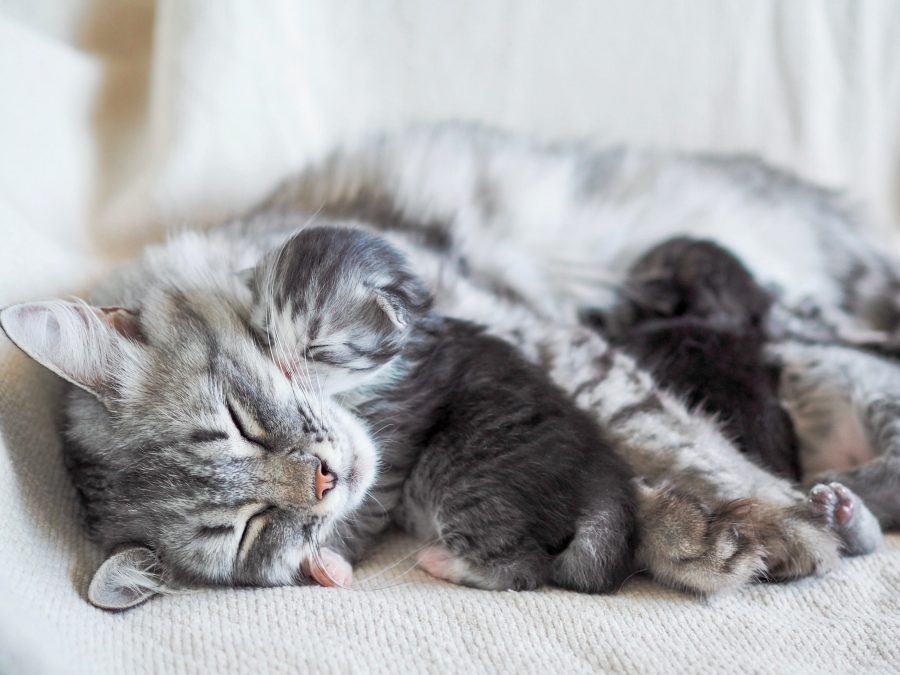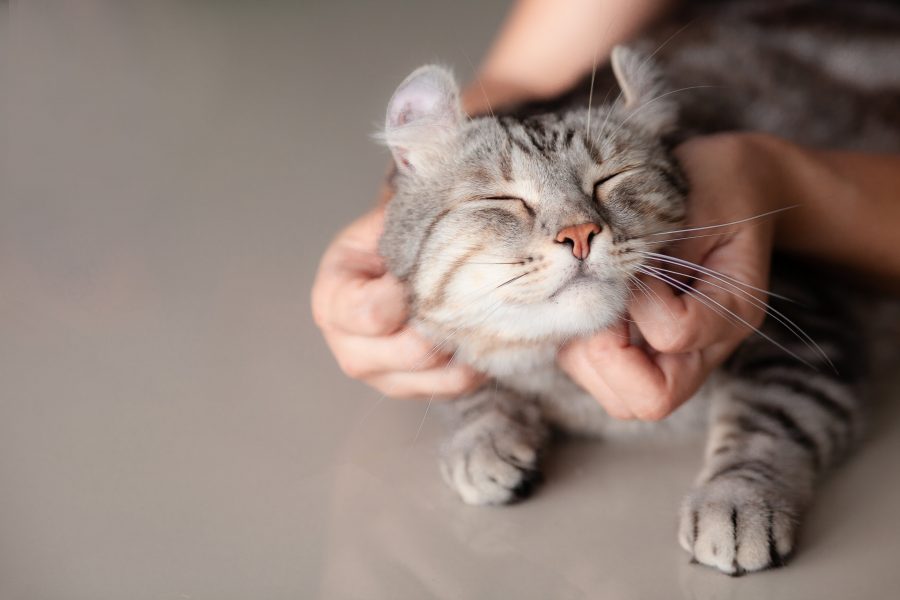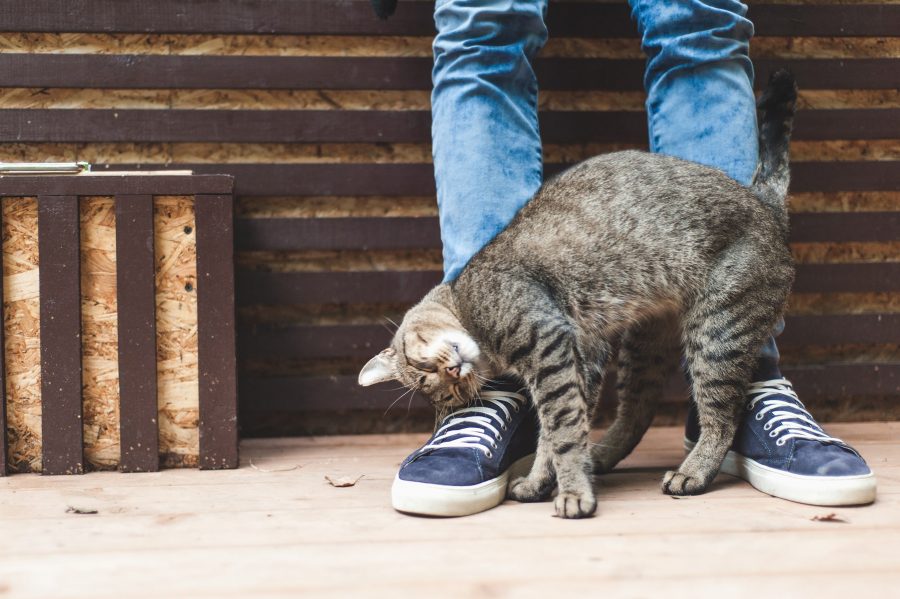Whether it’s a gentle vibration or a full-on diesel engine, a cat’s purr varies in intensity from feline to feline. Although humans struggle to understand all its subtleties, we now know that a cat’s purr is often associated with a moment of pleasure but can also be a sign of distress. So, how can we decipher it? Here’s everything you need to know.

When do cats start purring?
Unlike a kitten’s meows of distress, a cat’s first purrs can be heard a few days after birth. It’s difficult to determine whether purring is innate or learned. However, we can assume that purring is the result of learning because kittens hear their mother purring when she nurses them and start purring themselves a few days later.
Why do cats purr?
For pleasure
If you live with a cat, you’ll have noticed that there are many situations in which a cat can start purring: a caress, a gentle look, a familiar object, or even a friendly feline companion – all are good reasons to start up the purring machine! Yes, purring is a way your cat communicates pleasure to you.

Therefore, purring is an excellent way for your cat to communicate with you, and your cat knows this very well. In fact, without realizing it, you have probably reinforced this mechanism. For example, if every time you eat, your cat comes near you and purrs, and you give him a piece of meat, he is likely to associate his purring with getting food. So, the situation is likely to repeat itself. Clever cat!
In case of distress
Pleasure is not the only situation in which a cat purrs. When a cat is stressed, injured, or even dying, it can start purring. However, these situations are much less common than the daily purring associated with pleasure.
How do cats purr?
For the moment, humans still don’t fully understand all the mechanisms at play during purring. Several hypotheses have been proposed, such as:
- Contraction of the larynx muscles that would cause a vibration of the glottis during breathing;
- Vibration of the inferior vena cava amplified by the respiratory system;
- Contraction of the muscles of the soft palate;
- The ossification of the hyoid bone;
There are many hypotheses about felines, and they still remain a mystery. At the beginning of the 20th century, scientists established a classification system. They distinguished felines with a not or slightly ossified hyoid bone ligament, which are capable of roaring, from other felines capable of purring.
Among the “purring” felines, we find domestic cats, wild cats, lynx, servals, and ocelots. However, it is difficult to determine the lion, tiger, panther, and leopard.
But this classification was challenged in the 1990s, and the mystery surrounding felines and purring remains unsolved.

Why do some cats purr louder than others?
On average, purring is estimated to be around 25 to 30 dB. However, humans who live with cats know that all cats are not equal when it comes to purring! While some cats’ purring is barely perceptible, others purr at the top of their lungs. This is the case with Merlin, a British cat, who is now in the Guinness Book of World Records for purring at 67 dB. For comparison, 67 dB is the noise level of two people having a conversation or even that of a vacuum cleaner! One can’t imagine the nights of Merlin’s owners when he comes to purr at their heads in the middle of the night!
So why are there such differences between individuals? It seems that genetics plays a role. Purring is a form of vocalization, just like meowing, and cat lovers know that not all cats are equal in this regard. Some breeds are said to be more vocal than others (e.g. Oriental breeds), and the same goes for purring.
The “purr therapy”
Purring is not only a mode of communication, as it persists within the species. It can be assumed that it provides the cat with a selective advantage. In fact, purring is attributed with healing powers! Its frequency, estimated between 25 to 30 Hz, is said to have healing and reparative properties. This allows some cats to heal themselves.
This article might also interest you: Dogs and cats, how to get rid of fleas ?
